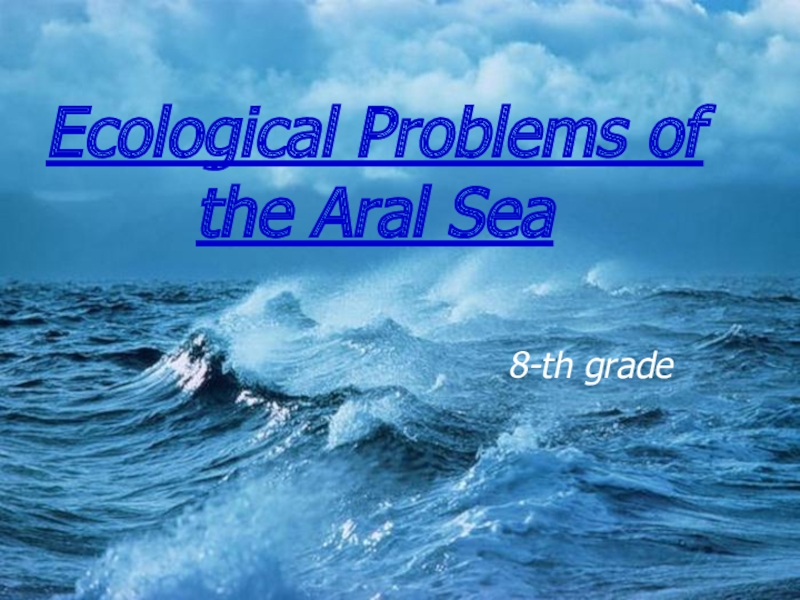form
Vorontsov Nikita and Petrova Marina
Teacher Misevra I.E.
- Главная
- Разное
- Образование
- Спорт
- Естествознание
- Природоведение
- Религиоведение
- Французский язык
- Черчение
- Английский язык
- Астрономия
- Алгебра
- Биология
- География
- Геометрия
- Детские презентации
- Информатика
- История
- Литература
- Математика
- Музыка
- МХК
- Немецкий язык
- ОБЖ
- Обществознание
- Окружающий мир
- Педагогика
- Русский язык
- Технология
- Физика
- Философия
- Химия
- Шаблоны, фоны, картинки для презентаций
- Экология
- Экономика
Презентация, доклад по английскому языку Нефть вокруг нас
Содержание
- 1. Презентация по английскому языку Нефть вокруг нас
- 2. Oil is one of the world's most
- 3. UsingAt the moment, 48% of the energy
- 4. The main oil fields in RussiaIn
- 5. How is this substance classified by
- 6. Heteroatomic components and a description of the
- 7. Слайд 7
- 8. Physical properties.Oil is an oily liquid from
- 9. Application of oilPeople began to use oil
- 10. Слайд 10
- 11. Being in natureOil deposits are located in
- 12. Слайд 12
- 13. Cracking of petroleum productsCracking is the process
- 14. Слайд 14
- 15. ThermalT = 470-500 ° CThe process proceeds
- 16. CatalyticT = 450-500 ° C, catalyst (aluminosilicates)The
- 17. Detonation resistance - the ability of the
- 18. Production of liquid fuelC16H34
- 19. Ecology"Before nature threatened man," writes J.-I.Custo, "and now a man threatens nature"
- 20. Слайд 20
- 21. Chemistry needs to be known!Thank you for attention!
Oil is one of the world's most important minerals (hydrocarbon fuel). This raw material for the production of fuels and lubricants and other materials. For its characteristic dark color and huge importance for the world economy,
Слайд 2Oil is one of the world's most important minerals (hydrocarbon fuel).
This raw material for the production of fuels and lubricants and other materials. For its characteristic dark color and huge importance for the world economy, oil (mineral) is called black gold.
This substance is formed together with hydrocarbons of gaseous type at a certain depth (mainly from 1.2 to 2 km). The maximum number of oil deposits is located at a depth of 1 to 3 km. Near the earth's surface, this substance becomes dense malt, semi-solid asphalt and other materials (for example, bituminous sand). By originality and chemical composition, the oil, the photo of which is presented in the article, is similar to natural combustible gases, as well as with ozocerite and asphalt. Sometimes all these combustible fossils are united under one name - petroleum.
This substance is formed together with hydrocarbons of gaseous type at a certain depth (mainly from 1.2 to 2 km). The maximum number of oil deposits is located at a depth of 1 to 3 km. Near the earth's surface, this substance becomes dense malt, semi-solid asphalt and other materials (for example, bituminous sand). By originality and chemical composition, the oil, the photo of which is presented in the article, is similar to natural combustible gases, as well as with ozocerite and asphalt. Sometimes all these combustible fossils are united under one name - petroleum.
Слайд 3Using
At the moment, 48% of the energy consumed on the planet
is oil (minerals). This is a proven fact. Oil (mineral) is the source of many chemicals used in various industries in the production of fuels, lubricants, polymer fibers, dyes, solvents and other materials. The growth of oil consumption led to an increase in prices for it and to a gradual depletion of mineral resources. This makes us think about switching to alternative energy sources.
Слайд 4 The main oil fields in Russia
In the territory of the
Russian Federation, there are a significant amount of deposits of this substance. Oil (mineral) is the national wealth of Russia. It is one of the main export products. The extraction and processing of oil is the source of significant tax revenues to the Russian budget. The development of oil on an industrial scale was begun at the end of the 19th century. At the moment, Russia has large operational oil production areas. They are located in different regions of the country.
Field name Opening date Recoverable reserves Oil production regions 2013 2013 300 million tons Astrakhan Oblast Samotlorskoye 1965 2.7 billion tons Khanty-Mansiysk AO Romashkinskoye 1948 2.3 billion tons Republic of Tatarstan Priobskoye in 1982 2.7 billion t Khanty-Mansiysk Autonomous District Arlanskoe 1966 500 million tons Republic of Bashkortostan Lyantorskoye 1965 2 billion tons Khanty-Mansi Autonomous Okrug Vankor 1988 490 million tons Krasnoyarsk Territory Fedorovskoe 1971 1.5 billion tons Khanty-Mansi Autonomous District Russian 1968 410 million tons Yamal-Nenets AO Mamontovskoe 1965 1 billion tons Khanty-Mansiysk AD Tuymazinskoye 1937 300 million tons Republic of Bashkortostan
Field name Opening date Recoverable reserves Oil production regions 2013 2013 300 million tons Astrakhan Oblast Samotlorskoye 1965 2.7 billion tons Khanty-Mansiysk AO Romashkinskoye 1948 2.3 billion tons Republic of Tatarstan Priobskoye in 1982 2.7 billion t Khanty-Mansiysk Autonomous District Arlanskoe 1966 500 million tons Republic of Bashkortostan Lyantorskoye 1965 2 billion tons Khanty-Mansi Autonomous Okrug Vankor 1988 490 million tons Krasnoyarsk Territory Fedorovskoe 1971 1.5 billion tons Khanty-Mansi Autonomous District Russian 1968 410 million tons Yamal-Nenets AO Mamontovskoe 1965 1 billion tons Khanty-Mansiysk AD Tuymazinskoye 1937 300 million tons Republic of Bashkortostan
Слайд 5 How is this substance classified by composition of hydrocarbons?
In
this regard, there are certain criteria. Separate types of oil in the class of hydrocarbons. They should be no more than 50%. If one of the hydrocarbon classes is at least 25%, then the mixed types of oil - naphthene-methane, methane-naphthenic, naphthenic-aromatic, aromatic-naphthenic, methane-aromatic and aromatic-methane - are distinguished. The first component contains more than 25%, and the second - more than 50%. Crude oil does not apply. To obtain technically valuable products (mainly motor fuel, raw materials for chemical industry, solvents), it is recycled.
Слайд 6Heteroatomic components and a description of the elemental composition of oil.
Along
with hydrocarbons, the composition of the product includes substances with impurity atoms (mercaptans, di- and monosulfides, thiophanes and thiophenes, and polycyclics and the like). They significantly affect the quality of oil. Also, the composition of the oil includes substances containing nitrogen. These are basically homologues of indole, pyridine, quinoline, pyrrole, carbazole, porphyrites. They concentrate for the most part in residues and heavy fractions. The composition of the oil includes oxygen-containing substances (naphthenic acids, tar-asphaltene, phenols and other substances). They are usually found in high-boiling type fractions. In total, more than 50 elements were found in oil. Together with the mentioned substances, V (10-5 - 10-2%), Ni (10-4-10-3%), Cl (from traces to 2 ∙ 10-2%) are present in this product, and so on. The content of these impurities and compounds in the raw materials of all kinds of deposits varies widely. As a result, it is only conditional on talking about the average petroleum chemical composition.
Слайд 8Physical properties.
Oil is an oily liquid from light brown to black
with a characteristic odor. It is slightly lighter than water and practically insoluble in water. Since oil is a mixture of various hydrocarbons, it does not have a certain boiling point.
Oil varies greatly in color (from light brown, almost colorless to dark brown, almost black) and in density (from light 0.65-0.70 g / cm3 to heavy 0.98-1.05 g / cm3).
The initial boiling point of oil is usually above 280 ° C. the pour point varies from +300 to -600С and depends mainly on the content of paraffin (the larger it is, the higher the pour point). The specific heat of oil is 1.7-2.1 kJ / kg; heat of combustion 43,7-46,2 mJ / kg; dielectric constant 2-2.5; electric conductivity 2.10-10-0.3.10-18 ohm-1.cm-1.
Viscosity varies widely and depends on the chemical and fractional composition of oil and resin content (the content of asphalt-resinous substances in it). The flash point of oil ranges from -35 to 1200C, depending on the fractional composition and saturated vapor pressure. Oil is soluble in organic solvents, it is practically insoluble in water under normal conditions, but it can form stable emulsions with it.
Oil varies greatly in color (from light brown, almost colorless to dark brown, almost black) and in density (from light 0.65-0.70 g / cm3 to heavy 0.98-1.05 g / cm3).
The initial boiling point of oil is usually above 280 ° C. the pour point varies from +300 to -600С and depends mainly on the content of paraffin (the larger it is, the higher the pour point). The specific heat of oil is 1.7-2.1 kJ / kg; heat of combustion 43,7-46,2 mJ / kg; dielectric constant 2-2.5; electric conductivity 2.10-10-0.3.10-18 ohm-1.cm-1.
Viscosity varies widely and depends on the chemical and fractional composition of oil and resin content (the content of asphalt-resinous substances in it). The flash point of oil ranges from -35 to 1200C, depending on the fractional composition and saturated vapor pressure. Oil is soluble in organic solvents, it is practically insoluble in water under normal conditions, but it can form stable emulsions with it.
Слайд 9Application of oil
People began to use oil long before our era.
For example, asphalt and bitumen were used in the construction of the walls of Babylon. King Nebuchadnezzar drowned an enormous furnace with oil. And the ancient Greek historian Herodotus described the way of oil extraction, which the ancient Greeks used. And in ancient India, oil was used to the full in construction
At present, the list of products obtained from oil is estimated in thousands. Suffice it to mention that oil products are used in almost all types of industry: energy, heavy and light, chemical and food. Petroleum products have found application in automotive, medicine, rocketry, agriculture and construction.
At present, the list of products obtained from oil is estimated in thousands. Suffice it to mention that oil products are used in almost all types of industry: energy, heavy and light, chemical and food. Petroleum products have found application in automotive, medicine, rocketry, agriculture and construction.
Слайд 11Being in nature
Oil deposits are located in the depths of the
Earth at different depths, where oil fills free space between some rocks. If it is under the pressure of gases, it rises along the well to the surface of the Earth.
Exploration of oil
The purpose of oil prospecting is identification, geological and economic assessment and preparation for development of oil deposits. Oil exploration is carried out with the help of geological, geophysical, geochemical and drilling works in rational combination and consistency.
At the first stage of the search phase in the basins with no established oil and gas content or for studying poorly investigated tectonic zones or lower structural floors in basins with established oil and gas content, regional work is carried out. For this purpose, aeromagnetic, geological and gravimetric surveys, geochemical studies of waters and rocks, profile crossing of the territory by electric and seismic exploration, drilling of reference and parametric wells are carried out. As a result, areas are set for further prospecting.
At the second stage, a more detailed study of oil and gas bearing zones is carried out by detailed gravity prospecting, structural geological survey, electro and seismic exploration, structural drilling.
Comparison of scales of scales 1: 100.000 - 1: 25.000 is made. the estimation of forecasts of oil and gas content is specified, and for structures with proven oil and gas content, prospective reserves are calculated.
At the third stage, exploratory wells are drilled to discover deposits. The first exploratory wells are drilled to maximum depth. Usually the first floor will be exploded first, and then the deeper. As a result, a preliminary estimate of the reserves is given.
The reconnaissance stage is the final stage in the geological exploration process. The main goal is preparation for development. In the process of exploration, deposits should be contoured, lithological composition, thickness, and oil and gas saturation determined. Upon the completion of exploration work, reserves are calculated and recommendations are given for putting the deposit into development. The effectiveness of the search depends on the discovery ratio of the deposits - the ratio of the number of productive areas to the total number of areas drilled by exploratory drilling.
Exploration of oil
The purpose of oil prospecting is identification, geological and economic assessment and preparation for development of oil deposits. Oil exploration is carried out with the help of geological, geophysical, geochemical and drilling works in rational combination and consistency.
At the first stage of the search phase in the basins with no established oil and gas content or for studying poorly investigated tectonic zones or lower structural floors in basins with established oil and gas content, regional work is carried out. For this purpose, aeromagnetic, geological and gravimetric surveys, geochemical studies of waters and rocks, profile crossing of the territory by electric and seismic exploration, drilling of reference and parametric wells are carried out. As a result, areas are set for further prospecting.
At the second stage, a more detailed study of oil and gas bearing zones is carried out by detailed gravity prospecting, structural geological survey, electro and seismic exploration, structural drilling.
Comparison of scales of scales 1: 100.000 - 1: 25.000 is made. the estimation of forecasts of oil and gas content is specified, and for structures with proven oil and gas content, prospective reserves are calculated.
At the third stage, exploratory wells are drilled to discover deposits. The first exploratory wells are drilled to maximum depth. Usually the first floor will be exploded first, and then the deeper. As a result, a preliminary estimate of the reserves is given.
The reconnaissance stage is the final stage in the geological exploration process. The main goal is preparation for development. In the process of exploration, deposits should be contoured, lithological composition, thickness, and oil and gas saturation determined. Upon the completion of exploration work, reserves are calculated and recommendations are given for putting the deposit into development. The effectiveness of the search depends on the discovery ratio of the deposits - the ratio of the number of productive areas to the total number of areas drilled by exploratory drilling.
Слайд 13Cracking of petroleum products
Cracking is the process of splitting hydrocarbons contained
in oil, which results in the formation of hydrocarbons with a smaller number of carbon atoms in the molecule.
The equipment of cracking plants is basically the same as for distillation of oil. These are ovens, columns. But the processing mode is different. Raw materials are also different. The cleavage process is carried out at higher temperatures (up to 6000 C), often at elevated pressures. At such temperatures large molecules of hydrocarbons are crushed into smaller ones.
When cracking, the oil undergoes chemical changes. The structure of hydrocarbons is changing. In the apparatus of cracking plants, complex chemical reactions occur. These reactions are enhanced when catalysts are introduced into the apparatus
The equipment of cracking plants is basically the same as for distillation of oil. These are ovens, columns. But the processing mode is different. Raw materials are also different. The cleavage process is carried out at higher temperatures (up to 6000 C), often at elevated pressures. At such temperatures large molecules of hydrocarbons are crushed into smaller ones.
When cracking, the oil undergoes chemical changes. The structure of hydrocarbons is changing. In the apparatus of cracking plants, complex chemical reactions occur. These reactions are enhanced when catalysts are introduced into the apparatus
Слайд 15Thermal
T = 470-500 ° C
The process proceeds slowly
Many unsaturated hydrocarbons are
formed
Received gasoline:
1) is resistant to detonation;
2) is unstable during storage (unsaturated hydrocarbons are easily oxidized)
Received gasoline:
1) is resistant to detonation;
2) is unstable during storage (unsaturated hydrocarbons are easily oxidized)
Слайд 16Catalytic
T = 450-500 ° C, catalyst (aluminosilicates)
The process proceeds quickly
There are
significantly fewer unsaturated hydrocarbons
Received gasoline:
Resistant to detonation;
2) more stable when stored (because there are few unsaturated hydrocarbons)
Received gasoline:
Resistant to detonation;
2) more stable when stored (because there are few unsaturated hydrocarbons)
Слайд 17Detonation resistance - the ability of the fuel to withstand strong
compression in the engine without premature combustion).
The alkanes of a normal structure are unstable to detonation.
Stable - branched alkanes, unsaturated and aromatic hydrocarbons.
Слайд 18Production of liquid fuel
C16H34 C8H18
+ C8H16
C8H18 C4H10 + C4H8
C4H10 C2H6 + C2H4
C8H18 C4H10 + C4H8
C4H10 C2H6 + C2H4
гексадекан
t
октан
октен
октан
t
бутан
бутен
t
бутан
этан
этен


























